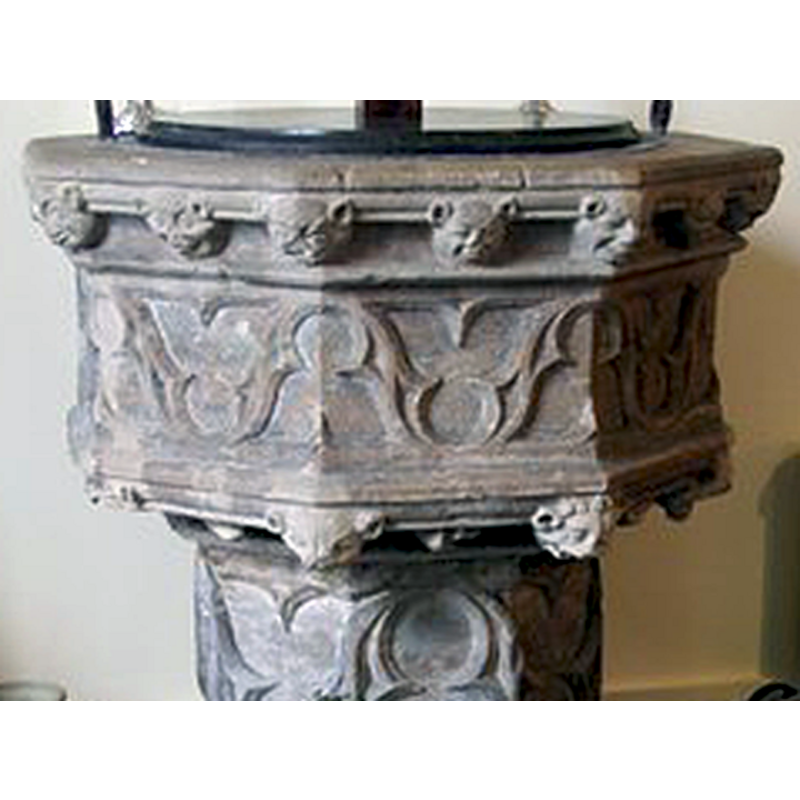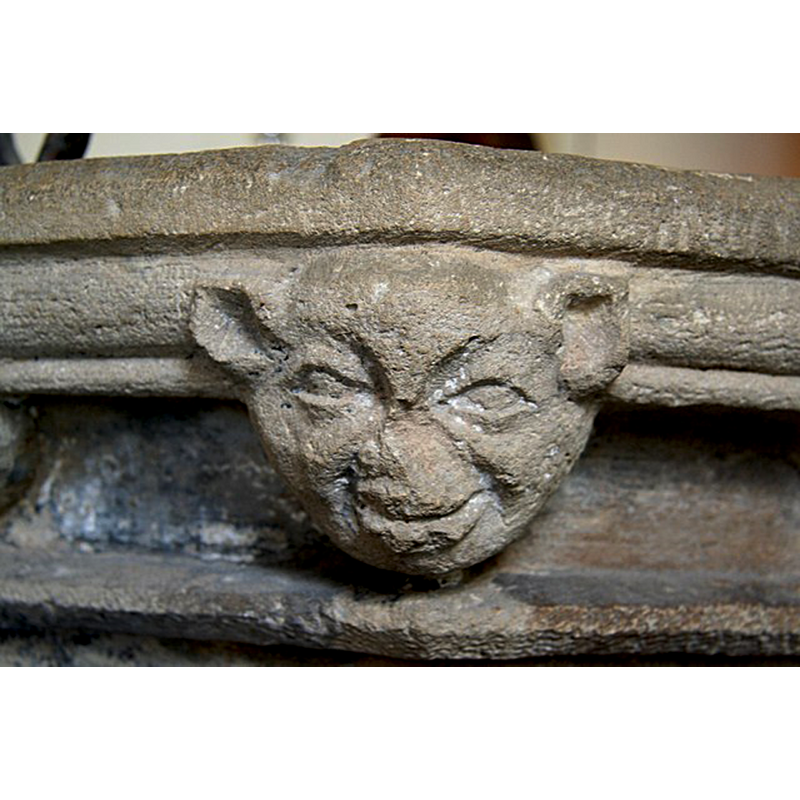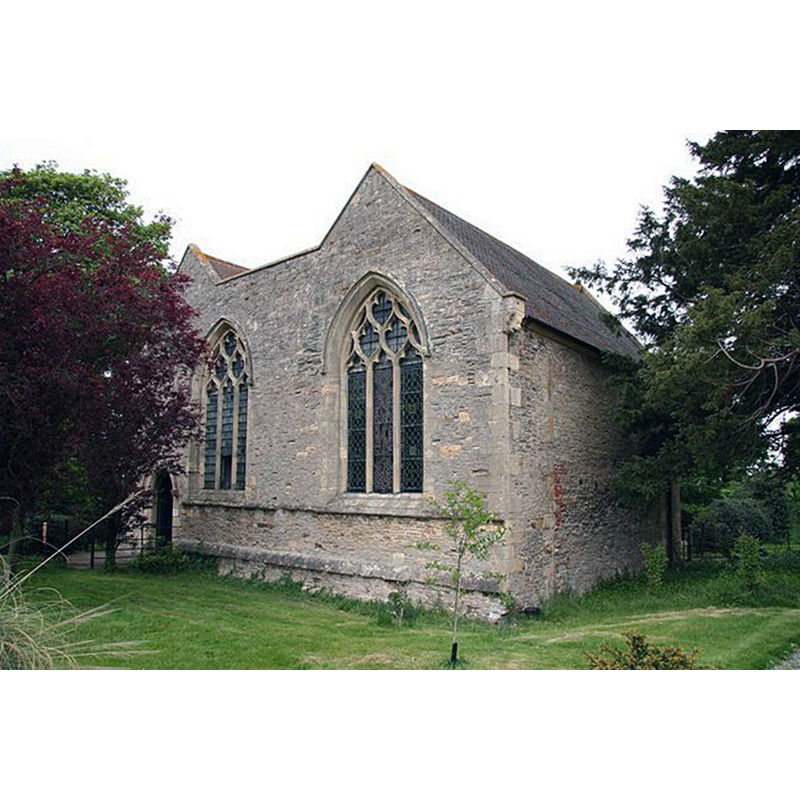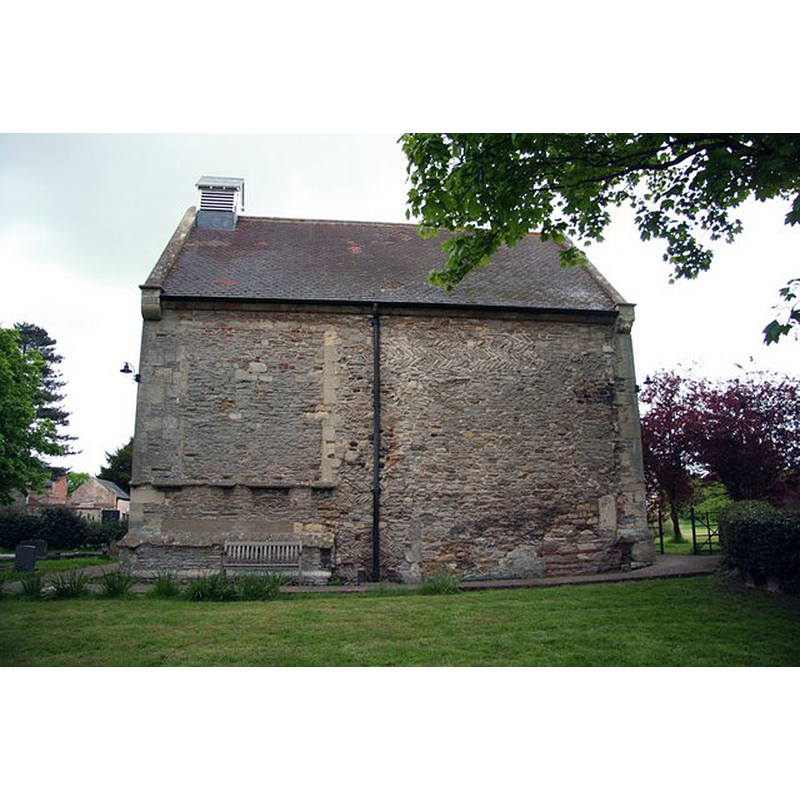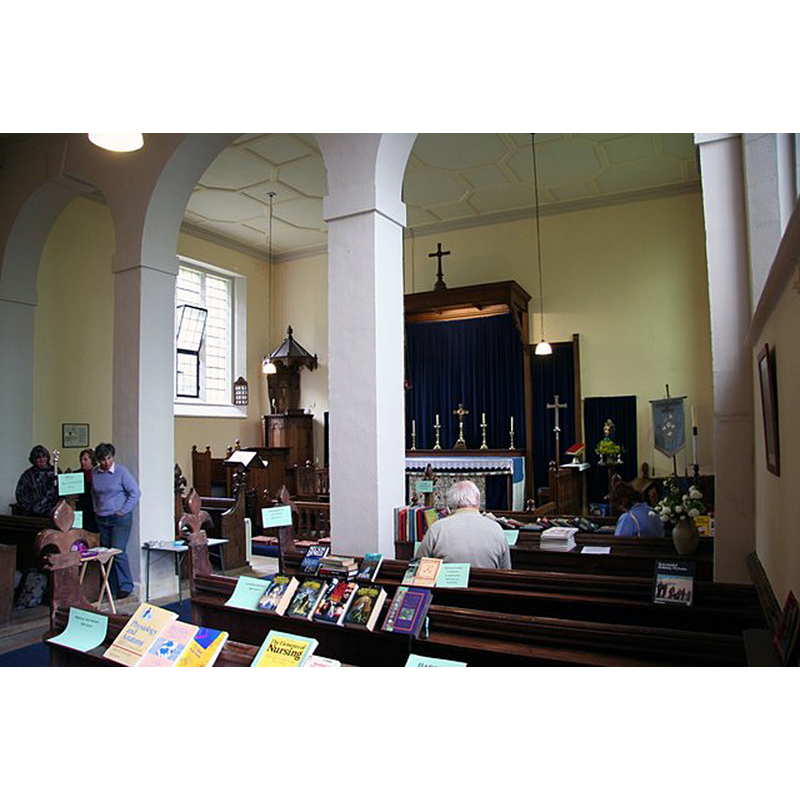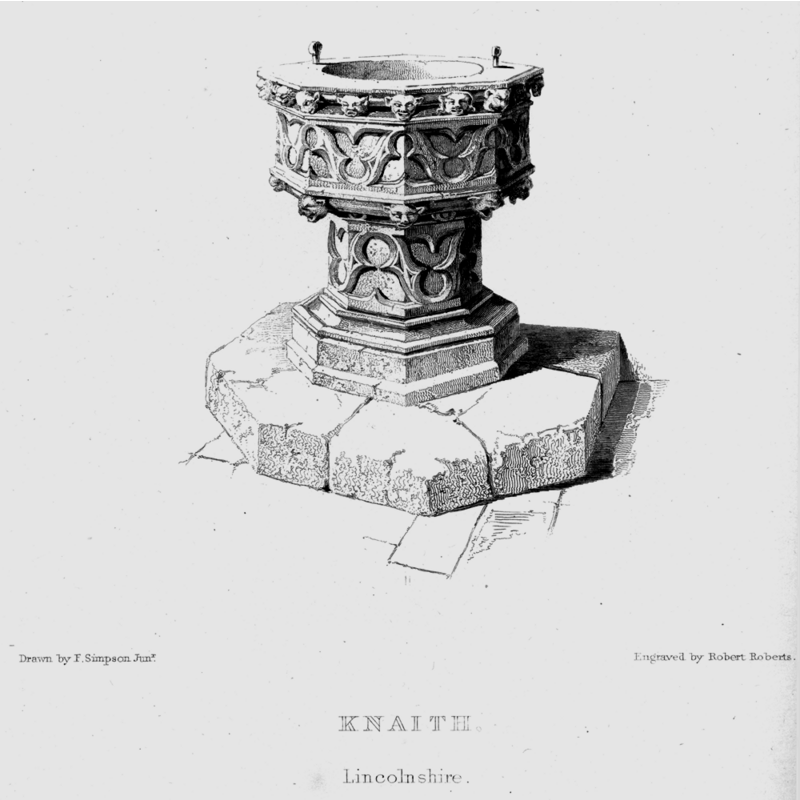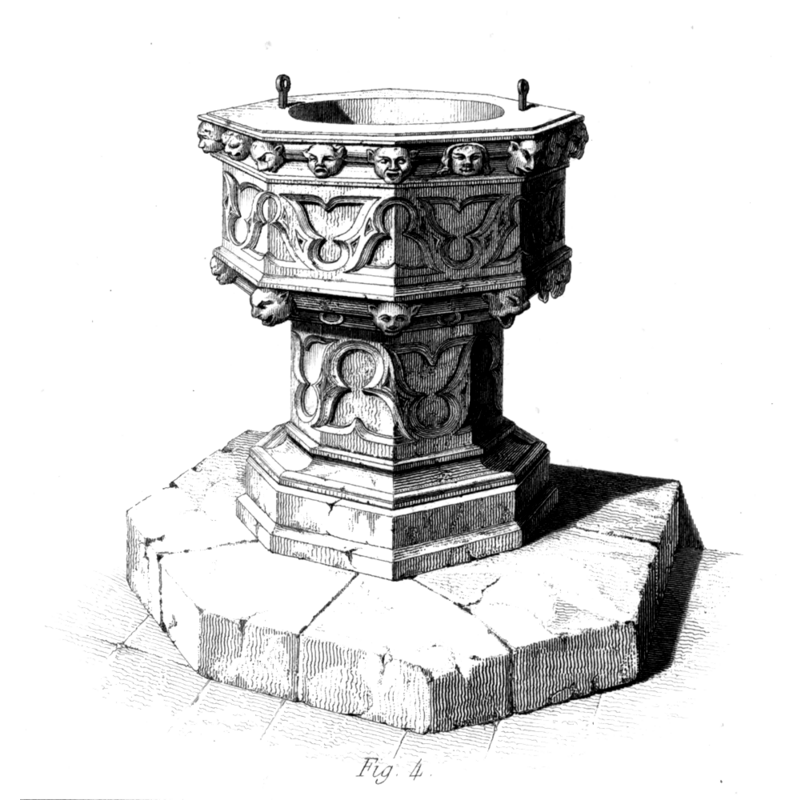Knaith / Cheneide
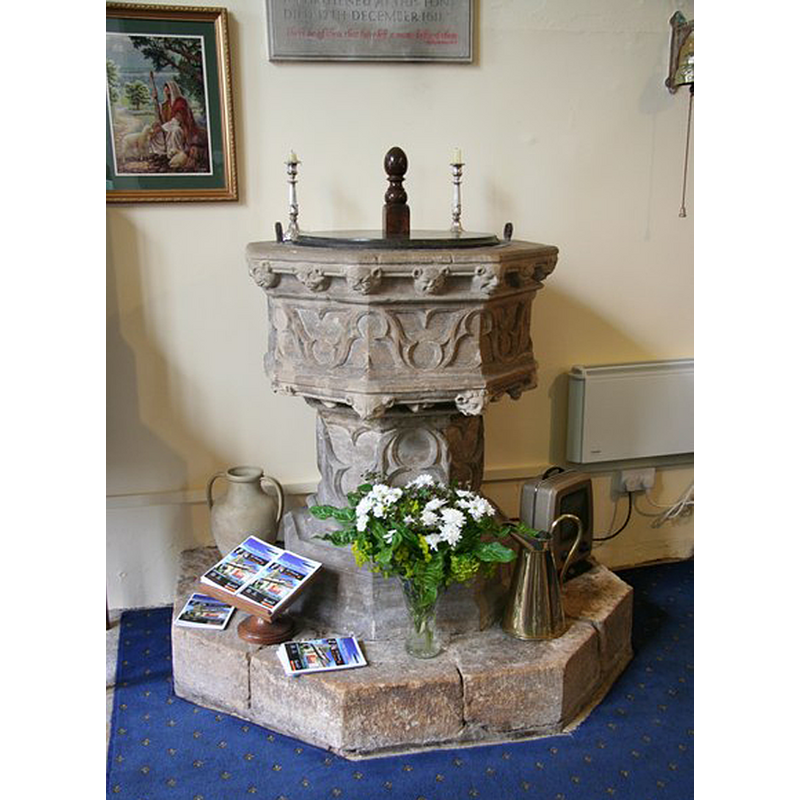
Image copyright © Richard Croft, 2008
CC-BY-SA-2.0
Results: 11 records
design element - motifs - floral - ball-flower - 8
Scene Description: one on each side of the lower recess of the underbowl chamfer
Copyright Statement: Image copyright © Richard Croft, 2008
Image Source: detail of a digital photograph taken 17 May 2008 by Richard Croft [www.geograph.org.uk/photo/830006] [accessed 25 September 2015]
Copyright Instructions: CC-BY-SA-2.0
design element - motifs - tracery - trefoiled
design element - motifs - tracery - trefoiled
head - 24
head - 8
Scene Description: animal, human and/or fantastic; all different; on the upper angles of the underbowl chamfer
Copyright Statement: Image copyright © Richard Croft, 2008
Image Source: detail of a digital photograph taken 17 May 2008 by Richard Croft [www.geograph.org.uk/photo/830006] [accessed 25 September 2015]
Copyright Instructions: CC-BY-SA-2.0
view of church exterior - southeast view
Scene Description: Source caption: "South east view of St.Mary's church at Knaith, an architectural and archaeological conundrum .... the two early 14th century windows with reticulated tracery seem too large for a nave of these proportions, are they re-set from a demolished aisle?"
Copyright Statement: Image copyright © Richard Croft, 2008
Image Source: digital photograph taken 17 May 2008 by Richard Croft [www.geograph.org.uk/photo/829989] [accessed 25 September 2015]
Copyright Instructions: CC-BY-SA-2.0
view of church exterior - west view
Scene Description: Source caption: "An archaeological conundrum. West wall of St.Mary's church at Knaith, 11th century herringbone masonry in a jumble of other stonework."
Copyright Statement: Image copyright © Richard Croft, 2008
Image Source: digital photograph taken 17 May 2008 by Richard Croft [www.geograph.org.uk/photo/829998] [accessed 25 September 2015]
Copyright Instructions: CC-BY-SA-2.0
view of church interior - nave - looking east
Scene Description: Source caption: "St.Mary's interior. Unexpected Jacobean and Georgian interior hidden inside a puzzling Medieval shell".
Copyright Statement: Image copyright © Richard Croft, 2008
Image Source: digital photograph taken 17 May 2008 by Richard Croft [www.geograph.org.uk/photo/830022] [accessed 25 September 2015]
Copyright Instructions: CC-BY-SA-2.0
view of font
view of font
view of font and cover
Scene Description: Source caption: "St.Mary's font. Very good 14th century Decorated octagonal font with ogee curves, trefoils and a band of curious heads at the top."
Copyright Statement: Image copyright © Richard Croft, 2008
Image Source: digital photograph taken 17 May 2008 by Richard Croft [www.geograph.org.uk/photo/830006] [accessed 25 September 2015]
Copyright Instructions: CC-BY-SA-2.0
INFORMATION
FontID: 01580KNA
Object Type: Baptismal Font1
Church/Chapel: Parish Church of St. Mary
Church Patron Saints: St. Mary the Virgin
Church Location: Church Lane, Knaith, Lincolnshire DN21 5PE
Country Name: England
Location: Lincolnshire, East Midlands
Directions to Site: Located on the A156 about 5 km SE of Gainsborough, 25 km WNW of Lincoln
Ecclesiastic Region: Diocese of Lincoln
Historical Region: Hundred of Well [in Domesday]
Font Location in Church: Simpson reported it "in the middle of the chapel at the west end" ca. 1828. Gailhabaud has it also in the west chapel ca. 1850
Century and Period: 14th century (early?), Decorated
Church Notes: originally 11thC church of a Cistercian nunnery?; not mentioned in Domesday
Font Notes:
Click to view
There is an entry for Knaith [variant spelling] in the Domesday survey [http://opendomesday.org/place/SK8384/knaith/] [accessed 25 September 2015], but there is no mention of cleric or church in it, other than the lord in 1066 and 1086, the abbey of Stow St. Mary's, and the tenant-in-chief in 1086, the bishop of Lincoln St. Mary's. A font here is illustrated in Simpson (1828), who describes it in the most complimentary terms: "This very splendid Font is we think altogether the handsomest we ever saw. The heads are admirably executed and all vary in design; in the deep hollow under the bowl. Its situation is in the middle of the chapel at the west end. The whole is in good preservation". The font is depicted in Simpson raised on a polygonal plinth. The upper basin side has a head at each angle plus one in the middle of the side, hence twenty-four altogether, but no two are alike, as Simpson had noted. The sides of the basin are ornamented with large Ogee trefoil motifs; this motif is also repeated on the stem of the octagonal base; two iron staples from the cover lock are still visible on the upper rim surface. The upper angles of the underbowl chamfer have again a singular head on each, all different; in the inner recess of the chamfer, each side is ornamented with a ball-flower motif, as mentioned in Simpson. The lower base is splayed, octagonal and plain. Described and illustrated in Gailhabaud (1850) as a beautiful and much reproduced [i.e., illustrated] baptismal font of the 14th century. Described in Cox-Harvey (1907) as a noteworthy example of Decorated period fonts. In Pevsner, Harris and Antram (1989): "A good Dec[orated[ piece with typical panels with cusped ogee curves. Friezes of heads below and above them. The ogee panels also on the stem." [NB: the Knaith parish church and the Heynings priory church may have been located almost side by side, although some sources appear to indicate that they were one and the same].
COORDINATES
Church Latitude & Longitude Decimal: 53.350962, -0.76208
Church Latitude & Longitude DMS: 53° 21′ 3.46″ N, 0° 45′ 43.49″ W
UTM: 30U 648956 5913648
MEDIUM AND MEASUREMENTS
Material: stone, type unknown
Font Shape: octagonal (mounted)
Basin Interior Shape: round
Basin Exterior Shape: octagonal
Drainage Notes: lead-lined
Rim Thickness: 15 cm [calculated]
Diameter (inside rim): 52.5 cm*
Diameter (includes rim): 82.5 cm* / 88.7 cm**
Font Height (less Plinth): 107.5 cm* / 108.7 cm**
Notes on Measurements: * Simpson (1828: 43) / **Gailhabaud (1850, t.III: unpaged)
LID INFORMATION
Material: wood, oak?
Apparatus: no
Notes: round, flat and plain with turned finial/handle; aooears modern -- two iron staples still anchoted in the upper rim, at opposite ends
REFERENCES
Gailhabaud, Jules, Monuments anciens et modernes: collection formant une histoire de l’architecture des differents peuples à toutes les epoques., Paris: Didot frères, 1850
Pevsner, Nikolaus, Lincolnshire, London: Penguin, 1989
Simpson, Francis, A series of ancient baptismal fonts: chronologically arranged, drwan by F. Simpson, Jun., engraved by R. Roberts, London: Septimus Prowett, 1828
